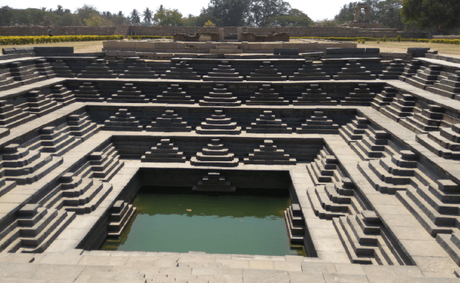Often referred to as the world’s largest open air museum, Hampi in Karnataka is a heritage site quite like none other. A favorite with tourists from all over the world, Hampi is a proposed UNESCO world heritage site and offers an experience of a lifetime. Located on the banks of the river Tungabhadra, Hampi was the capital of the erstwhile glorious Vijayanagar empire and is steeped in tales of history and mythology.
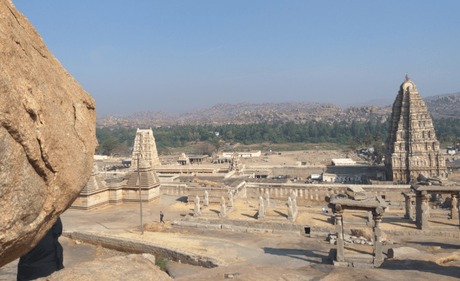 A view of Hampi
A view of Hampi
As I mentioned in my earlier post, it is a treasure house of monuments built in stone and includes extravagant temples, enclosures, markets, monoliths and monuments. The sprawling historic town is filled with at least 30 major monuments with some of the prominent ones being the Vittala temple, Queen’s bath, Virupaksha temple, Elephant’s stables, Badavalinga temple and monolithic statues like that of the Saswe Kalu Ganesha and Yoga Narasimha.
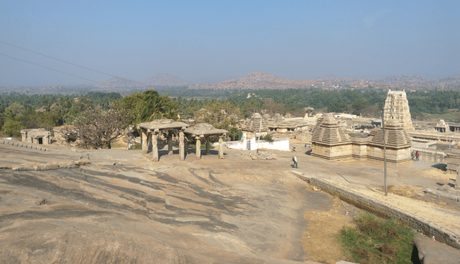
The Mahanavami Dibba aka Dasara Dibba is one among Hampi’s most prominent monuments known for its architectural brilliance and excellent craftsmanship.
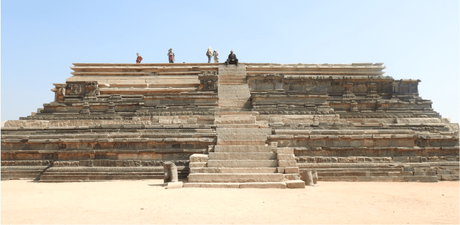
Situated in the Royal Enclosure, it is one of the tallest monuments in the area and an impressive structure to say the least. It is essentially an elevated stone platform with beautiful carvings all over and is also known as the House of Victory.
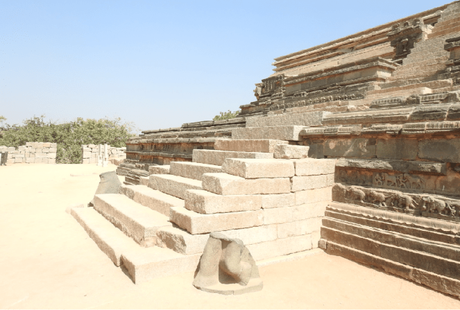
History has it that it was built in the year 1513 A.D by king Krishnadevaraya in order to commemorate his victory over Udaygiri which is now in present day Orissa. It is believed that the king often viewed march pasts, processions and the grand celebrations of the Dasara temple from this grand elevated platform. The stonework on the enclosure is intricate and awe inspiring to say the least.
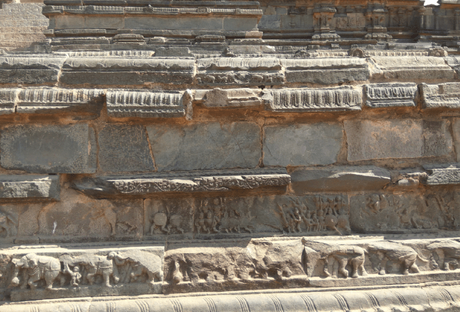
The structure which faces north is over 10 meters tall and is accessed by mulitple flights of stairs. As one climbs the stairs, the beautiful carvings of elephants, horses, chariots, dancers and musicians cannot be missed.
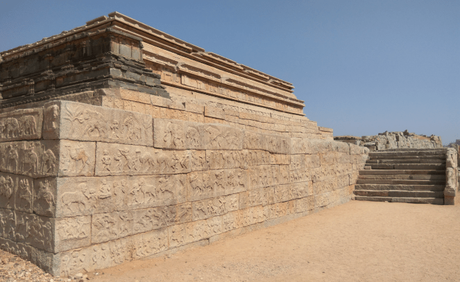
It is believed that the entry for the king to the platform was separate from the commoners. The celebratory platform, however, has been damaged to a great extent even though it is now being restored by the authorities.
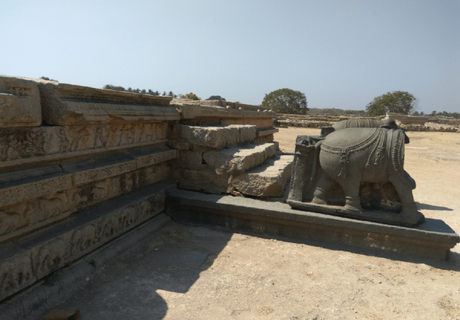
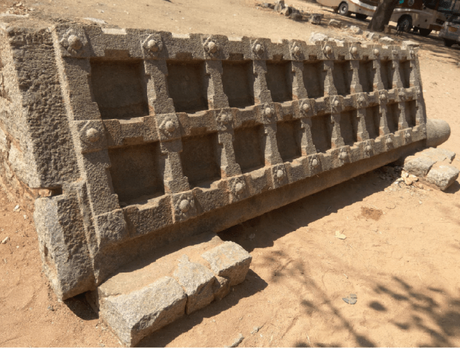
Do not miss the totally magnificent stepped tank located in close proximity to the Mahanavami Dibba within the Royal Enclosure. Yet another example of the splendid craftsmanship during those times.
